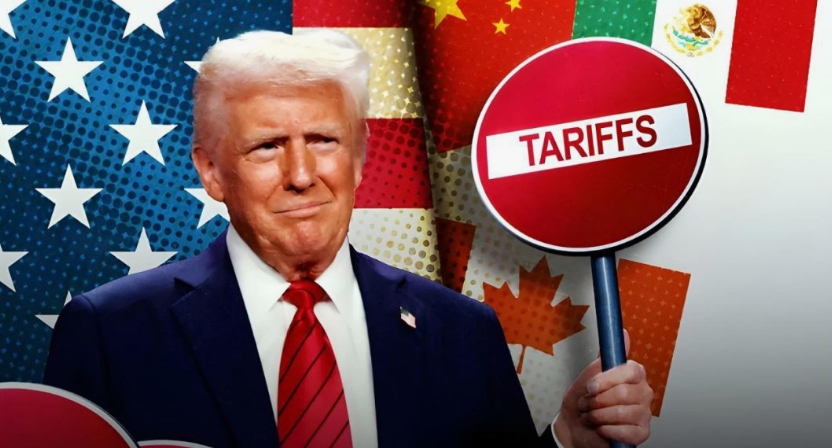
Trump Moves to Ease Grocery Costs by Lifting Tariffs on Key Food Imports – President Donald Trump is rolling back a sweeping set of reciprocal tariffs on major agricultural imports, a significant reversal in trade strategy triggered by mounting political pressure over food affordability. The White House said on Nov. 14 that Trump had signed an executive order reducing tariffs on a broad range of ordinary items—including beef, coffee, chocolate, bananas, tomatoes, oranges, tea, and spices—after months of consumer discontent over stubbornly high supermarket expenditures.
The administration’s move shows a growing realization that chronically increased food costs have become not merely an economic pain for American households but also an increasingly formidable political danger. The decision comes in the aftermath of huge Democratic victories earlier this month in New Jersey, Virginia, and New York City—races in which cost-of-living anxieties dominated voter considerations. “We just want to bring down some of the food,” Trump told reporters onboard Air Force One during a journey to Florida on Nov. 14, marking a rare recognition that his tariff policies may be contributing to rising costs.
A Turnaway From Hardline Tariff Policy
Since taking office, Trump has forcefully altered the U.S. trade system, placing a uniform 10% base tariff on practically all imports alongside country-specific charges that differed by trade partner. While these measures were touted as weapons to safeguard American companies and force “fair trade,” they also disrupted global supply lines, boosted import costs, and—according to many economists—contributed to the inflation that has dragged on Americans for more than two years.
The current executive order marks a striking change from Trump’s past assurance that tariffs were not causing inflation. Economists, supermarket suppliers, and consumer groups have frequently pushed back on that claim, pointing to growing wholesale costs tied to tariff-driven supply constraints.
White House spokeswoman Kush Desai described the policy move as part of a broader, more flexible strategy. “The Trump administration is committed to pursuing a nimble, nuanced, and multi-faceted strategy on trade and tariffs,” Desai added, implying that the president is now willing to make specific modifications to reduce domestic cost constraints.
Groceries: Where Inflation Hits Home
Prices at grocery stores have been one of the most noticeable and unpleasant pain areas for Americans. According to the U.S. Bureau of Labor Statistics, grocery costs jumped 0.6% from July to August— the biggest monthly increase since October 2022. Overall inflation reached 3% in September, slightly up from August, illustrating how pricing pressures stubbornly continue even as the broader economy stabilizes.
For many families, these numbers translate directly into harsh daily choices. Coffee, fresh fruit, and meat—products directly touched by Trump’s tariffs—have become substantially more expensive in recent years. And unlike other categories of spending, food is inescapable, making any increase feel personal and immediate.
By exempting commodities like beef, tea, tropical fruits, juices, spices, and fertilizers from tariffs, the administration intends to reduce some of these pressures. Fertilizer exclusions, in particular, could assist cut expenses for farmers, thereby reducing prices across a far larger spectrum of agricultural products.
International Trade Deals to Support Price Cuts
The rollback did not happen in isolation. It follows a series of framework trade deals announced on Nov. 13 between the U.S. and various Latin American countries—including Argentina, Ecuador, Guatemala, and El Salvador. Once implemented, these agreements will abolish tariffs on specific foods and other critical items from those nations.
U.S. officials predict more such accords may be concluded by the end of the year, part of a broader push to diversify imports and stabilize prices by depending more heavily on trading partners throughout the Western Hemisphere. These actions also represent a strategic recalibration: while tariffs remain a major component of Trump’s trade policy, the administration is increasingly cognizant of the political cost of allowing consumer prices continue soaring.
Elections as a Wake-Up Call
The timing of the tariff rollback is no coincidence. Democrats’ recent political gains—in states and towns where cost-of-living issues topped voters’ concerns—sent a strong message that rising costs remain a defining issue for the American public.
Trump has made affordability a focus in recent speeches, but he has continued to contend that any residual inflation is the fault of policies established by former President Joe Biden, not his own trade strategy. “We are the ones that have done a great job on affordability, not the Democrats,” Trump remarked on Nov. 6, while also recognizing that Republicans were hit in the recent elections “based on affordability.” Trump Moves to Ease Grocery Costs by Lifting Tariffs on Key Food Imports
The administration has floated numerous plans aimed at easing financial burden on individuals, including a hypothetical 50-year mortgage option and a $2,000 “tariff dividend check.” Though no concept has proceeded beyond debate, its presentation illustrates the urgency the White House currently feels.
A Political Gamble With Economic Stakes
Rolling back tariffs is a politically hazardous decision for Trump, who has based much of his economic narrative around the premise that hefty tariffs defend American workers. Supporters of the program say that tariffs remain crucial weapons for negotiating favorable trade treaties and preventing unfair competition from foreign firms.
But critics say that consumers have borne much of the expense, paying extra for things ranging from gadgets to groceries. By lowering duties on crucial food imports, Trump is hinting that he may be willing to fine-tune his policy to avoid alienating those frustrated by rising costs. Trump Moves to Ease Grocery Costs by Lifting Tariffs on Key Food Imports
What Comes Next?
While the tariff exemptions are likely to help relieve grocery costs, experts caution that the impact may take weeks or even months to ripple through supply chains. And the broader inflation situation remains complex, impacted by global energy markets, labor shortages, and increased interest rates.
Still, the government thinks the policy adjustment would deliver immediate political gains and longer-term economic relief. If successful, the move might herald a new chapter in Trump’s trade strategy—one that combines protectionism with the real need to keep everyday essentials cheap. Trump Moves to Ease Grocery Costs by Lifting Tariffs on Key Food Imports





